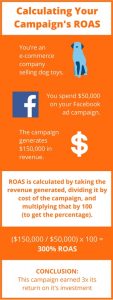Last month, Ad Age ran a story called “Six Key Metrics for Measuring the Effectiveness of Video Content.” The piece begins by pointing out “video’s longstanding measurement issues,” which is important not just as a hedge against the veracity of what ensues, but also to reiterate that, even at the highest levels, the metrics when it comes to video is still a murky affair. But just because it’s not an exact science, doesn’t mean there’s no science to it. And the first step to establishing some kind of rhyme and reason is crafting a hierarchy of objectives and priorities.
In the Ad Age piece, the author poses this to marketing execs, agencies and other media professionals, and then culls together a list of the top six metrics in order of importance. It’s worth noting this article is geared more toward videos in general (as opposed to explainer videos), but let’s take a look at what they came up with and then try to translate the results into more of a business world context:
Ad Age’s 6 Key Metrics (as of June 17, 2015)
1. Mind Share
2. Revenue
3. Brand Lift
4. Engagement
5. Reach
6. Viewability
The first thing that strikes me (and worries me) about this list, is that two of the top three metrics are almost impossible to quantify. Or, at the least, they’re incredibly subjective. So while “Mind Share” and “Brand Lift” are undeniably a vital part of the equation, it’s troubling that when it comes to metrics—a word whose meaning literally refers to that which is measurable—the top of this is dominated by abstractions.
To replace these abstractions with something more concrete, and to do so within the context of corporate videos, I’d suggest that the top of this list begin with “Targeted Reaction.” Meaning that every corporate video—no matter how long or short—ought to contain some kind of call to action. Maybe it’s a goal of getting employees to select a new insurance plan, or maybe it’s persuading consumers to sign up for your free trial. Whatever the circumstance, it should be a binary action; something that can be answered with a simple yes or no. Did the employee select an insurance plan? Did the consumer of this video sign up for a free trial? How did the viewer of this video react to your targeted action? The answer to that, I’d argue, is the most valuable information of all. And unlike “mind share” or “brand lift” it’s a statistically viable metric!
Ultimately, of course, the long-term goal of your video is to increase profitability. So it would make sense that revenue be our second-most important metric. And the best part of all is that it’s likely the easiest one to calculate.
Next on the list is engagement. At first glance, this might appear to be an attempt to measure how engaged a viewer is—he liked it! No, he loved it!—but in actuality “engagement” refers to how often the video is shared. Did the viewer send it to friends over email? Tweet about it? Post on Facebook?
Second-to-last on the list is reach, which seems like the most intuitive metric of all. How many people did this video reach? How many eyeballs processed this information? But alas, this is the era of digital mayhem, and nothing is quite that simple. Mostly because (as the Ad Age article astutely points out) there doesn’t seem to be a consensus for how a “view” is measured. Some platforms define a view as at least one second watched, while others require a few seconds of playback (and calibrate with passive viewings). But even though there’s no industry standard for this yet, that’s not a problem for you and your video. All you have to do is select a metric that works for you and apply it with consistency.
Lastly, we have viewability, which takes into the how of how your video is watched. Was the video played on your page? Or was it viewed on a separate landing page? Did they do so with audio and, if so, did they keep it on throughout? As you can see from the questions, this metric contains within it a variety of variables and the key for you and your business is to figure out which information you’d prefer most. This is a behavioral measurement, really, and with this metric the world is your guinea pig…
So overall, I really enjoyed Ad Age’s, “Six Key Metrics for Measuring the Effectiveness of Video Content.” But with a tweak towards measurability and corporate objectives, I’d suggest it look something more like this:
1. Targeted Reaction
2. Revenue
3. Engagement
4. Reach
5. Viewability
What do you think?
(186)





